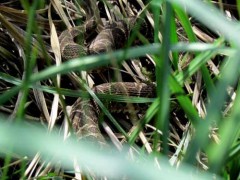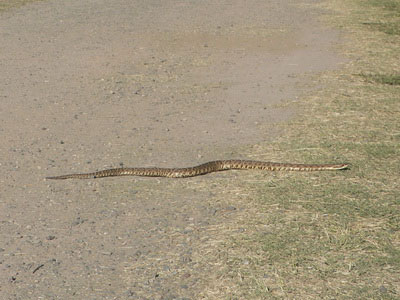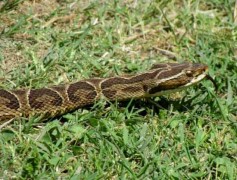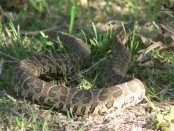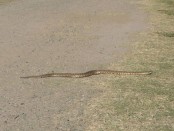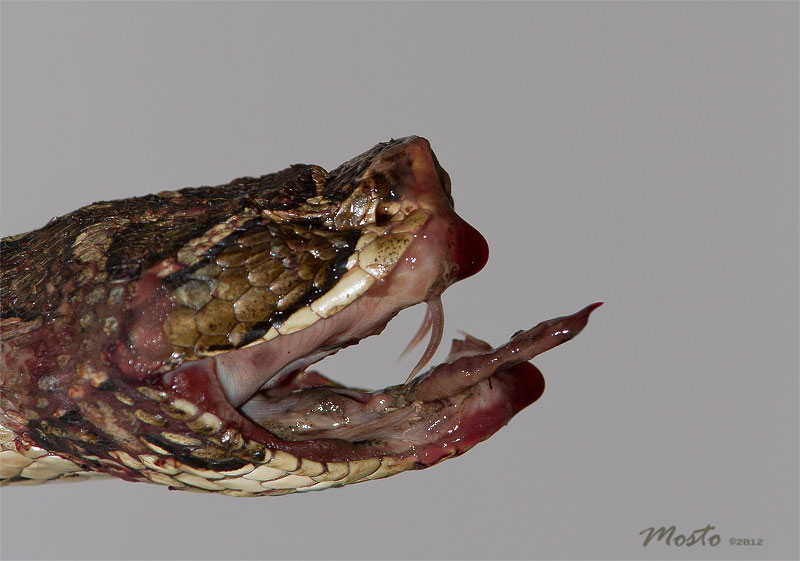 Pablo tells us “We found this pit viper dead at the road junction on the coast. It was bitten to death. I don't know when it happened but it seemed recently.” Pablo tells us “We found this pit viper dead at the road junction on the coast. It was bitten to death. I don't know when it happened but it seemed recently.”
The Urutu Pit Viper is a venomous snake. That's why, we must be careful in case we find an individual. It is advisable to report it immediately to the Reserve staff so that it might be captured by trained people. NEVER do it yourself. Bites may cause very serious consequences.
Lucas Damer, who was trained at the Instituto Malbrán to handle this type of situations, explains to us that the bite of this snake must be treated within the first eight hours so that symptons can be taken in good time. This viper's venom is hemotoxic, which causes skin necrosis and produces internal bleeding.
In case of a bite it is IMPERATIVE to take the bitten person to the Hospital Muñiz, center especialized in snake accidents - Uspallata 2272, to be treated with antivenom as soon as possible. How to help:
DO NOT APPLY A TOURNIQUET, DO NOT INCISE THE BITTEN SITE, DO NOT SUCK THE POISON OUT OF THE WOUND, WASH THE WOUND AND TAKE THE BITTEN PERSON TO THE HOSPITAL
The venom is inoculated through the fangs. The fangs are sited on a small jawbone, which rotates. If the mouth is shut, the fangs remain folded along the upper mandible and are not visible. When the mouth is opened, they move to a perpendicular position. As the jaws open widely too, the fangs can inject venom deep into the prey's flesh. They have an inner duct that connects to the venom gland. This gland is behind the eyes, that is why it looks like an arrowhead.
Be cautious!
© Pablo Mosto - Texto: Cora Rimoldi |
